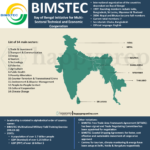President of India
President of India
Introduction
The President of India is the head of the state and the ceremonial first citizen of the Republic of India. Though the President is often termed as a nominal head, the office carries immense dignity and constitutional responsibility, acting within the framework of the parliamentary system of governance. In this article, We’ll cover all constitutional provisions, powers, appointment process, etc in detail.
Constitutional Provisions Related to President of India
- Articles 52 to 78 in Part V of the Indian Constitution deal with the Union Executive of India.
- Article 52: The President of India
- Article 53: Executive power of the Union
- Article 54: Election of the President
- Article 55: Manner of election of the President
- Article 56: Term of office of the President
- Article 57: Eligibility for re-election
- Article 58: Qualifications for election as President
- Article 59: Conditions of the President’s office
- Article 60: Oath or affirmation by the President
- Article 61: Procedure for impeachment of the President
- Article 62: Time of holding election to fill a vacancy in the President’s office
- Article 71: Matters related to the election of President or Vice-President
- Article 72: Powers of the President to grant pardons, etc. and to suspend, remit or commute sentences in certain cases
- Article 85: Sessions of Parliament, prorogation and dissolution
- Article 111: Assent to bills passed by the Parliament
- Article 112: Union Budget
- Article 123: Powers of President to promulgate ordinances
- Article 143: Power of President to consult Supreme Court
Election of the President
The President of India is elected not directly by the people of India, but by the members of a electoral college consisting of:
- the elected members of both the Houses of Parliament
- the elected members of the legislative assemblies of the State
- the elected members of the legislative assemblies of the Union Territories of Delhi and Puducherry
The following do not participate:
- The nominated members of both the Houses of Parliament
- the nominated members of the state legislative assemblies
- the nominated members of the Legislative Assemblies of Delhi and Puducherry
- the members (both elected and nominated) of the state legislative councils
- Where an Assembly is dissolved, members cease to be qualified to vote in the Presidential election, even if fresh elections to the dissolved assembly are not held before the Presidential election.
- To maintain uniformity in the scale of representation of different states as well as parity between States as a whole and the Union, the number of votes each member of the Electoral College is entitled to cast at such election is determined in the following manner:
- Value of Vote of a Member of Legislative Assembly (MLA) = (Total population of State/Total number of elected members in State Legislative Assembly) x 1/1000
- Value of Vote of a Member of Parliament (MP) = Total values of votes of all MLAs of all States/Total number of elected MPs
- The Presidential election is held in accordance with the System of Proportional Representation by means of the single transferable vote and the voting is done by secret ballot
- In order to be declared elected to the office of the President, the candidates must secure a fixed quota of votes.
- Electoral Quota = (Total number of valid votes polled/2)+1
Qualifications for Election as President
A person to be eligible for election as the President of India should fulfil the following qualifications.
- He/she should be a citizen of India.
- He/she should have completed 35 years of age.
- He/she should be qualified for election as a member of the Lok Sabha.
- He/she should not hold any office of profit under the Union government, any State government, any local authority, or any other public authority. A sitting President or Vice-President, Governor, and Minister of Union/State is not deemed to hold any office of profit.
Further,
- Nomination for election to the office of President must be subscribed by at least 50 electors as proposers and 50 electors as seconders.
- The candidate has to make a security deposit of ₹ 15,000 in the Reserve Bank of India. The security deposit is liable to be forfeited in case the candidate fails to secure 1/6th of the votes polled.
- Till 1997, the number of proposers and seconders was ten each and the security deposit was Rs 2500.
Oath or Affirmation by the President
- The President has to make and subscribe to an oath or affirmation before entering upon his/her office.
- In his/her oath, the President swears:
- To faithfully execute the office,
- To preserve, protect, and defend the Constitution and the law,
- To devote himself to the service and well-being of the people of India.
- The oath of office of the President is administered by the Chief Justice of India, and in his/her absence, the senior-most judge of the Supreme Court.
Conditions of President's Office
The Constitution lays down the following conditions of the office of the President:
- He/she should not be a member of either House of Parliament or the House of State Legislature. If any such person is elected as President, he/she is deemed to have vacated his/her seat in that house on the date on which he/she enters upon his/her office as President.
- He/she should not hold any other office of profit.
- Use of official residence without the payment of rent
- Entitled to such emoluments, allowances, and privileges as may be determined by Parliament.
- His emoluments and allowances cannot be diminished during his/her term of office.
The President of India is also entitled to a number of privileges and immunities such as:
- He/she enjoys personal immunity from legal liability for his/her official acts.
- During his/her term of office, he/she is immune from any criminal proceedings, even in respect of his/her personal acts.
- He/she cannot be arrested or imprisoned while in office.
- Civil proceedings can be instituted against him/her in respect of his/her personal acts during his/her term of office after giving two months’ notice.
Term of President's Office
- The President holds office for a term of 5 years from the date on which he/she enters his/her office.
- He/she can resign from the office at any time by addressing the resignation letter to the Vice President.
- He/she can also be removed from the office by the process of Impeachment.
- He can hold office beyond his term of 5 years until his/her successor assumes charge of that office.
- He is eligible for re-election to that office for any number of terms.
Impeachment of President
The President of India can be removed from office before the completion of his/her term by the process of Impeachment for the ‘violation of the Constitution’. However, the Constitution does not define the ‘violation of the Constitution’.
Process of Impeachment
- The impeachment charges can be initiated by either House of the Parliament, i.e. Lok Sabha or Rajya Sabha.
- These charges should be signed by 1/4th members of the House that frames the charges and a 14-days’ notice should be given to the President.
- After the impeachment resolution is passed by a majority of 2/3rd of the total membership of that House, it is sent to the other House, which should investigate the charges.
- The President has the right to appear and to be represented in such investigation.
- If the other House also sustains the charges and passes the impeachment resolution by a majority of 2/3rd of the total membership of that House, then the President stands removed from his office from the date on which the resolution is so passed.
- The process of impeachment is a quasi-judicial procedure in the Parliament.
Important Note:
- The nominated members of either House of Parliament can participate in impeachment, though they do not participate in his election.
- The elected members of Legislative Assemblies of States and Union Territories of Delhi and Puducherry do not participate in impeachment, though they participate in his election.
- No President has been impeached so far.
Vacancy in the President's Office
A vacancy in the President’s Office can occur in the following ways:
- On the expiry of his/her tenure of 5 years.
- By his/her resignation
- On his/her removal by the process of impeachment
- By his/her death
- Otherwise, for example, when he/she becomes disqualified to hold office or when his/her election is declared void.
Power & Functions of the President
The powers and functions of the President are studied under the following heads:
- Executive Powers of President of India
- Legislative Powers of President of India
- Financial Powers of President of India
- Judicial Powers of President of India
- Diplomatic Powers of President of India
- Military Powers of President of India
- Emergency Powers of President of India
- Veto Powers of President of India
- Ordinance making Powers of President of India
- Pardoning Powers of President of India
Constitutional Position of the President
- The Constitution of India provides for a Parliamentary form of government. Consequently, the President has been made only a nominal Executive and the real Executive being the Union Council of Ministers.
- Article 74: There shall be a Council of Ministers headed by the Prime Minister to aid and advise the President who shall in exercise of his functions, act in accordance with such advice.
- The President can act on his discretion under the following situations:
- Appointment of the Prime Minister of India when no party has a clear majority in the Lok Sabha or when the Prime Minister in office dies suddenly and there is no obvious successor.
- Dismissal of the Union Council of Ministers (CoM) when it cannot prove the confidence of the Lok Sabha.
- Dissolution of the Lok Sabha when the Council of Ministers (CoM) has lost its majority in the Lok Sabha.
List of the Presidents of India from 1947 to 2025
The details list of the Presidents of India since independence can be accessed in this article.
Full Indian Polity Study Material
Want to read some more articles?
-
 Shanghai Cooperation Organization (SCO): Origin, Members, Facts, etc for UPSC and other exams
Shanghai Cooperation Organization (SCO): Origin, Members, Facts, etc for UPSC and other exams -
 BRICS: Origin, members and others for UPSC, PSC & other exams
BRICS: Origin, members and others for UPSC, PSC & other exams -
 BIMSTEC for UPSC: Origin, Members & More
BIMSTEC for UPSC: Origin, Members & More -
 General Science for Competitive exams: UPSC, PSC, APFC, EO-AO, SSC, etc
General Science for Competitive exams: UPSC, PSC, APFC, EO-AO, SSC, etc -
 THE TRADE UNIONS ACT, 1926 for UPSC EPFO APFC/EO-AO, ALC, and Other exams
THE TRADE UNIONS ACT, 1926 for UPSC EPFO APFC/EO-AO, ALC, and Other exams -
 Understanding Macroenvironment: Marketing Environment in Principles of Marketing
Understanding Macroenvironment: Marketing Environment in Principles of Marketing -
 Understanding Microenvironment: Marketing Environment in Principles of Marketing
Understanding Microenvironment: Marketing Environment in Principles of Marketing -
Interjections in English
-
Conjunctions in English
Copyright© 2024 | All rights reserved | Made in India